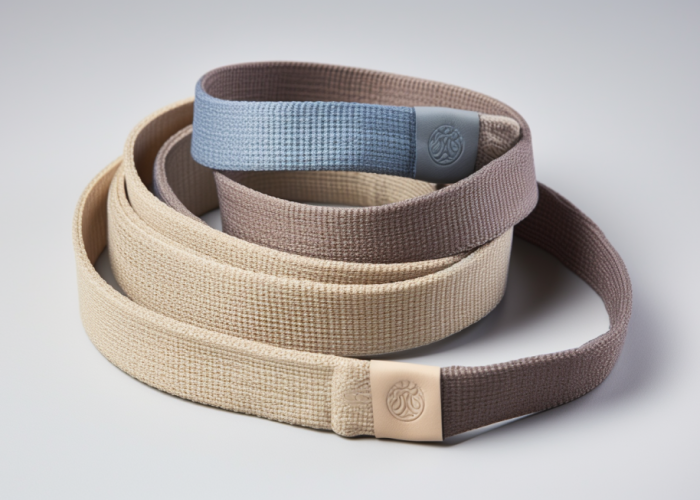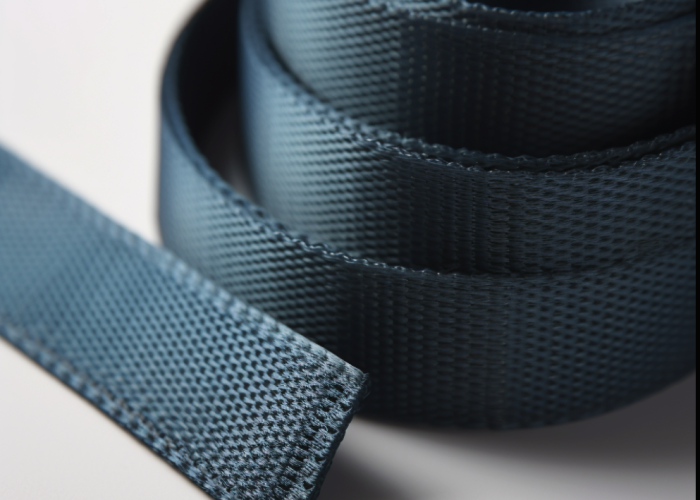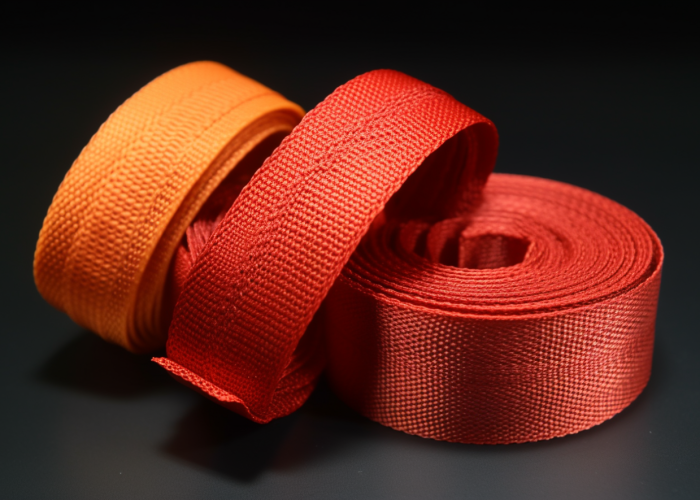Through decades of manufacturing tubular webbing for diverse industrial applications, we’ve observed how this unique construction method delivers superior load distribution and enhanced durability compared to flat alternatives. Engineers consistently choose tubular webbing when applications demand reliable strength-to-weight ratios and resistance to edge fraying.
Tubular webbing is a seamless, hollow-core strap woven into a continuous tube, creating a rounded profile that distributes load evenly and reduces edge stress compared to flat webbing.
Discover how tubular webbing is made, its key specs, and performance traits—plus expert insights to help engineers choose the best solution for tough applications.


Webbing manufacturing expert with 15+ years of experience helping product developers build high-performance straps for industrial, medical, and outdoor use.
Tubular webbing is woven using circular looms to create a seamless, double-layered tube that’s later flattened for flexibility. This construction creates enclosed edges that resist fraying and enhance load distribution compared to flat webbing alternatives.
Key Advantages of Tubular Webbing Construction:
Circular loom technology achieves 80-110 picks per minute while using 80-100% more raw material due to double-layer construction, but produces 30-40% greater tensile strength than flat alternatives.
In our production experience, tubular webbing is the most flexible and edge-stable option for climbing slings, rescue anchors, and safety harnesses. Shuttle looms manufacture seamless material for critical applications requiring uniformity on both edges, while needle looms produce mixed edge types for cost-sensitive uses.
Military specifications allow up to three continuous sections per 300-ft spool, with ISO 9001:2015 quality management ensuring consistent tolerances.
Specify tubular webbing when requiring enclosed edges, superior load distribution, and fraying resistance. Costs run 20-30% higher than flat alternatives due to specialized looms, but seamless edges reduce failure risks and extend service life.
Tubular webbing delivers 4,000-18,000 lbf tensile strength with 25-40% longer service life than flat alternatives due to superior edge protection and damage tolerance.
Key Performance Specifications:
Standard 1-inch nylon tubular webbing provides 4,046 lbf (18 kN) tensile strength, while premium versions reach up to 9,000 pounds breaking point strength. Field testing shows webbing maintains structural integrity even when cut more than halfway through while under load.
Material selection significantly impacts environmental resistance. Polyester webbing maintains structural integrity and performance in harsh outdoor environments with inherent UV resistance. In contrast, nylon webbing loses 50-60% of its strength after 36 months of continuous sun exposure, while Kevlar can lose up to 50% strength with as little as 40 hours in noontime sun.
From manufacturing experience, tubular webbing’s pliability allows it to glide better over rough surfaces, preventing wear and tear that occurs with flat webbing.
Specify polyester for UV-intensive applications, nylon for cost-sensitive indoor use. Tubular construction distributes stress evenly, reducing edge failure risks compared to flat alternatives.
Tubular webbing features double-layered tube construction with enclosed edges, while flat webbing uses single-layer solid weave with exposed edges that can fray.
Key Construction Differences:
Tubular webbing is a circular nylon “tube” sewn flat for ease of use, making it much stronger than flat webbing due to the extra doubled material. Tubular webbing is much more flexible than flat webbing, being soft and pliable while gliding better over rough or jagged surfaces.
Performance characteristics differ significantly: tubular webbing holds knots nicely and is far more supple, while flat webbing does not hold knots very well which is the largest limiting factor. Tubular webbing is not as prone to damage from sharp bends because it conforms to corners better than stiffer flat webbing.
Application preferences reflect these differences: manufacturers use flat nylon webbing for large products such as straps, reinforcement bindings and seatbelts, while tubular webbing suits applications such as hoses, filters and coverings.
Choose tubular for knot-dependent applications, edge protection, and flexibility under load. Select flat for hardware compatibility, cost efficiency, and rigid load distribution.
Tubular webbing is primarily used in climbing, rescue operations, and industrial rigging where superior knot retention, edge protection, and strength are safety-critical.
Primary Application Markets:
Tubular webbing is the standard for climbing, with its tubular geometry making it stronger and more durable than similar width flat webbing. One-inch tubular webbing is one of the most versatile tools in any rescue kit, used in rigging systems and packaging patients. It is commonly used in industrial applications or for prolonged weight-bearing activities such as climbing or aerial performances.
Specification requirements vary by application: climbing-spec webbing is thicker, heavier and slicker, whereas military-spec is thinner, lighter and has a rougher surface texture. Professional climbers favor climb-spec webbing for uncompromising construction that outperforms normal mil-spec webbing in strength, flexibility, knotability and durability.
Market applications include creating anchor points, climbing slings, rescue harnesses, cargo securing systems and emergency response equipment.
Select climbing-spec for maximum performance applications, mil-spec for weight-sensitive uses. Ensure material certifications match industry safety standards.
Tubular webbing is defined by its width, strength rating, weight per foot, and compliance with industry standards such as UIAA or MIL-W-5625K.
Core Technical Specifications:
Spec Type Common Value Notes
Width 5/8″, 1″, 1.5″, 2″ 1″ most common for anchors
Strength 4,046–18,000 lbf Varies by grade (UIAA, MIL)
Weight 12.85 g/ft (nylon) Polyester = lighter (7.75 g/ft)
Standard Codes MIL-W-5625K, CE, UIAA Based on application
Spool Format Up to 300 ft, 3 sections Not always continuous
Available widths for bulk tubular webbing include 1″ and 5/8″, with one inch being the standard width for making anchors while 5/8″ is often used to make homemade slings. Standard specifications show 1″ width with 40 grams per meter and 4,046 lbf (18 kN) tensile strength for CE and UIAA certified nylon.
Weight considerations impact portability: one inch tubular webbing weighs 12.85 grams per foot versus 7.75 grams per foot for 1 inch polyester webbing. Manufacturing standards vary significantly: climbing-spec is thicker, heavier and slicker, whereas military-spec is thinner, lighter and has a rougher surface texture.
Spool specifications follow industry standards: military standards allow for up to three sections per spool with maximum spool length of 300 ft. Water knot requirements specify leaving at least 2″ tails for safety when tying runners, with water knot efficiency at approximately 75%, reducing section strength by 25%.
Specify climbing-spec for maximum strength applications, mil-spec for weight-sensitive uses. Consider load calculations accounting for knot efficiency losses and sharp bend strength reductions when designing safety systems.
Need spec sheets, strength data, or certification summaries for your application? Our technical team can send exact material breakdowns and load tables for any use case.

To select tubular webbing, match material grade, width, and breaking strength to your load, environment, and compliance needs.
Material Selection by Application:
Application Recommended Spec Notes
Pet leashes / straps MIL-W-17337 Type IA Light duty
Tie-downs / utility MIL-W-17337 Medium duty
Safety gear / harness MIL-W-5625 Type 2A High tension
Outdoor environments High-tenacity polyester UV-resistant
Critical systems Nylon 6,6 > 30k g/mol Strongest-to-weight
Width and thickness directly impact performance, with each 1/4 inch increase in width providing approximately 800-1,000 pounds of additional breaking strength. High-tenacity nylon fibers with molecular weights exceeding 30,000 g/mol provide optimal strength-to-weight ratios.
Environmental Resistance Factors to Evaluate:
Synthetic web slings require periodic inspections at intervals no greater than 12 months with specific temperature limitations. Cost-performance analysis shows tubular webbing costs 20-30% more than flat webbing due to specialized manufacturing, but provides superior strength and durability.
Match webbing specifications to load requirements with appropriate safety margins. Consider environmental factors including UV exposure, temperature extremes, and chemical contact when selecting materials. Verify compliance with industry standards for your specific application.
Send us your load specs or design drawings—we’ll recommend the optimal material, weave type, and standard compliance for your application.

Tubular webbing’s seamless double-layered construction delivers superior strength and edge protection for climbing, rescue, and industrial applications. Polyester provides optimal UV resistance while nylon offers cost-effectiveness for indoor use. Select specifications based on load requirements and environmental exposure for reliable performance. Our engineering team supports material selection and custom design solutions.
Yes, tubular webbing provides 30-40% greater tensile strength than flat webbing of the same width due to its double-layered construction and enclosed edges that distribute loads more evenly.
Yes, we offer volume discounts starting at 10,000 feet annually with flexible delivery schedules. Long-term contracts available with price protection and priority allocation.
Use 5:1 safety factor minimum for personnel lifting, 4:1 for material handling. Consider dynamic loading, sharp bend losses, and knot efficiency reductions when calculating working loads.
Standard widths ship within 2-3 days. Custom specifications require 2-4 weeks depending on quantity and material requirements. Contact our technical team for expedited options.
Acids, alkalis, and solvents can reduce strength by 20-50%. Polyester offers better chemical resistance than nylon. Request our chemical compatibility chart for specific exposures.
Replace webbing showing 10%+ strength loss, visible cuts deeper than 25% thickness, UV degradation, chemical damage, or after any shock loading event exceeding design limits.